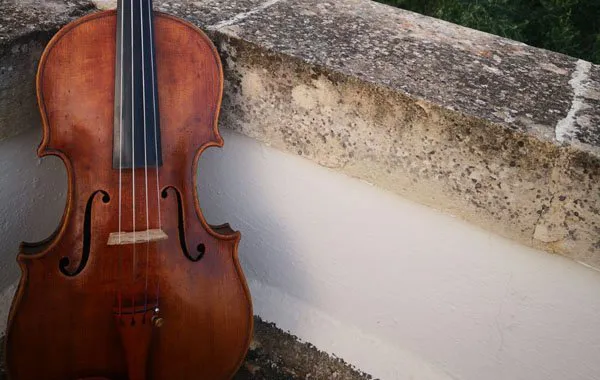Basic Viola Course

Viola Course for Children and Adolescents
The Scuola di Musica di Fiesole offers viola courses for children and adolescents, even those without prior musical experience, providing an enriching environment for learning to play the viola, where playing together is prioritized from the outset. Young students are immediately introduced to choral and orchestral ensembles tailored for them, like the Micromusici.
The viola course (offered as either a two-year program with small viola group lessons or individual viola lessons) begins by familiarizing students with the instrument and bow. Gradually, music theory and technique are introduced, enabling students to tackle increasingly complex repertoires.
Each of the course’s three levels – basic, intermediate, and advanced – concludes with a certification exam to assess skills and progress to the next module. The non-curricular viola course, available from age 11, does not include exams.
The course begins with an introduction to the viola, showcasing the instrument’s structure and parts and demonstrating how to produce sound by touching the instrument. Bow exercises within the viola course are integral to developing proper grip, while students are taught the correct posture to avoid neck, shoulder, and back strain.
Many beginners rent instruments, with the Scuola offering viola rentals at nominal rates, ensuring students have appropriately sized instruments.
The Scuola di Musica di Fiesole provides two options for basic viola courses: beginners with no prior musical experience can join the SuonInsieme program with group lessons (3-4 children) for the first two years, or they may begin with individual viola lessons.
In both formats, students engage in group activities such as basic theory classes (Cantare il solfeggio or RagazzInCoro), where they learn sound, silence, duration and pitch through interactive games that develop sound perception and emission, motor coordination and peer interaction.
In line with the school’s pedagogical approach, students also participate in early orchestral experiences, learning essential ensemble-playing skills.
In the early stages of their viola course students learn simple melodies, gradually moving to more complex pieces as their confidence and skill increase. They develop precision with the bow, adjusting pressure, speed, and direction. Through imitation and engaging exercises, they master left-hand fingering on the strings and coordination of the right hand with the bow.
Attention to expression and phrasing, dynamics, and tone color is cultivated from the start. Students begin understanding the basics of music theory, such as notation and timing, and learn to read music. Teachers guide students on materials and emphasize the importance of consistent individual practice alongside lessons.
As the course progresses, students tackle techniques like vibrato and various bow strokes, explore different fingerboard positions and engage in more challenging technical work. Progress in viola studying allows them to participate in various youth ensembles: Orchestra Piccolissimi Musici, Crescendo, Crescendo Molto, and chamber groups.
The viola pre-academic course allows students to build practical and theoretical skills, evaluated through certification exams at each of the three modules – basic, intermediate, and advanced – which form the viola study plan and require the attendance to complementary courses.
Students aged 11 and above may also enroll in a non-curricular viola course, which does not require exams.
Public performance is a vital part of every musician’s development, especially for young students in the Scuola di Musica di Fiesole’s viola courses. Students are thus provided with numerous opportunities to perform publicly from the beginning, participating in concerts, recitals, and various events organized by the school.
The school recommends a preparatory path for children enrolling in the viola course, to ensure a natural introduction to the instrument. The Musicami course, based on E. Gordon’s Music Learning Theory, is designed for children aged 0-6, while rhythmic-choral activities are recommended for children aged 3-9.
children and adolescents
from June 1st to September 1st
September to June
variable based on ISEE. Please click “Fees” button for details
if places are available, it is possible to enroll during the course of the year